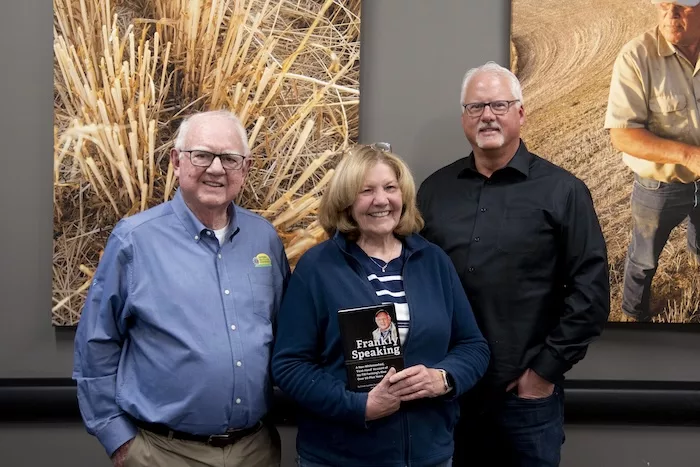American Farriers Journal
American Farriers Journal is the “hands-on” magazine for professional farriers, equine veterinarians and horse care product and service buyers.

Frank Lessiter (left), Alice Musser (center) and Mike Lessiter (right) reunite at the Lessiter Media headquarters on Oct. 17, 2024
Last week, American Farriers Journal (AFJ) Editor Jeff Cota and I were recapping the great memories flowing in on the history of AFJ, and the advancements that our subscribers are sharing about the world of difference in the industry vs. a half-century ago. After asking me of my observations, Jeff invited me to contribute an “essay” of my own. I was glad to oblige.
I wasn’t around for most of AFJ’s first decade of our family’s ownership of the title. I graduated from Journalism School in 1991, and my dad’s (Frank) business was rebuilding from finding itself on life support after the terrible 1980s. And while I would’ve been happy to work for Dad during my own challenging job search, there wasn’t room at the time. Mom and Dad lost a significant chunk of their business in 1989, 8 years after they hung out their own shingle. But just like nearly every ag business that turned the calendar to the 1990s, they were blessed to survive.
But Dad was convinced I needed to work elsewhere for my own early mentoring and experience. So in between my own job search, I was working part-time as an assistant editor on the 3 small titles Dad edited and produced: Farmer’s Digest, No-Till Farmer and Ridge-Till Farmer. Back then, it was Dad, my mom, Pam (business manager), the late Sue Ramstack (circulation manager) and me. Just four of us. After regaining his footing, he was searching for another property to buy, and…